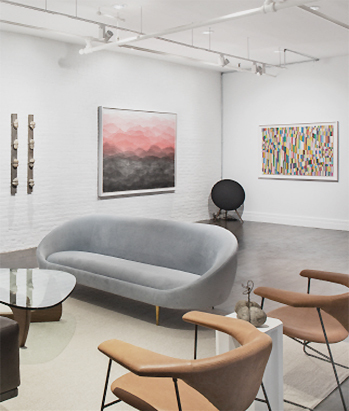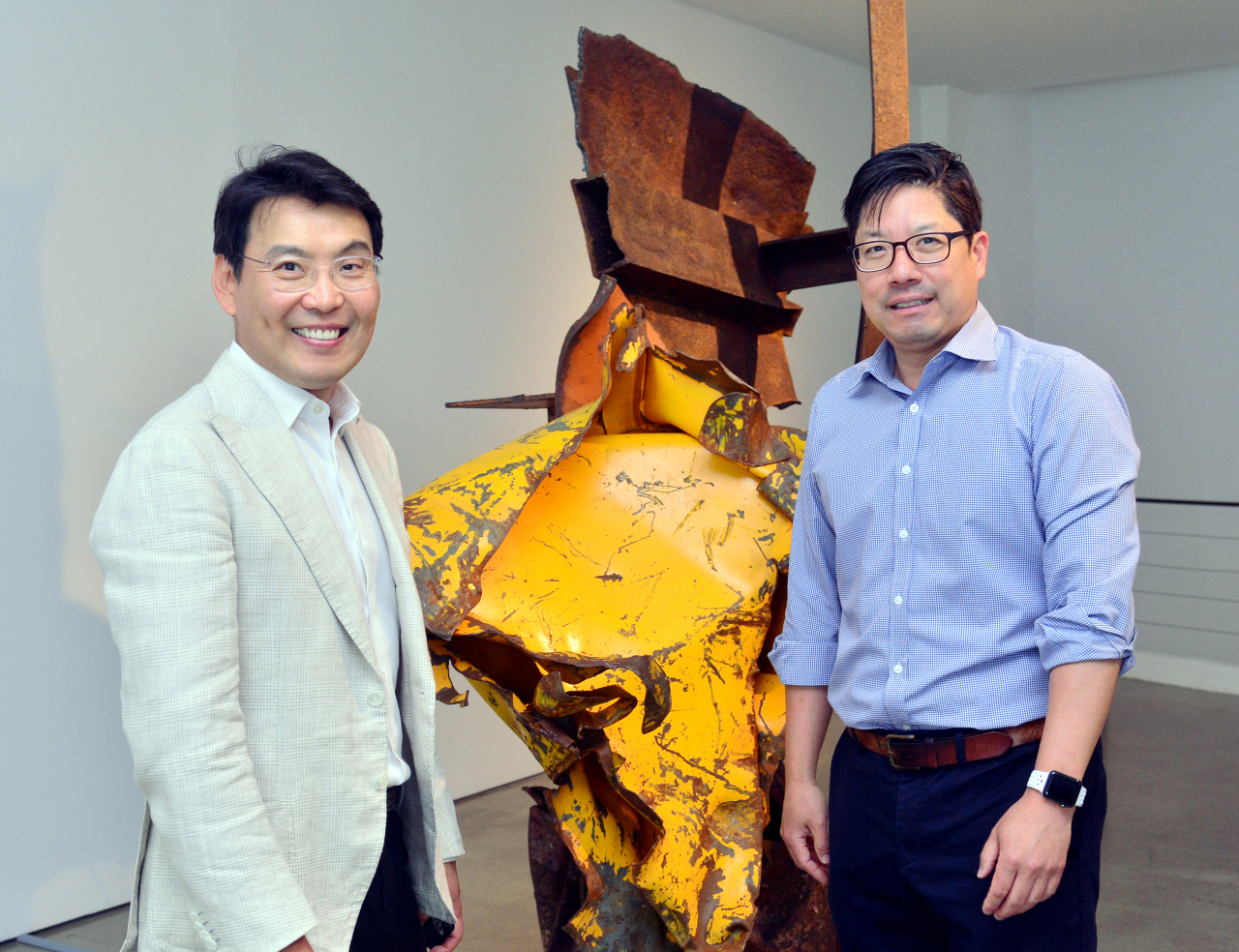 |
Gallery Hyundai in Jongno, central Seoul. (Park Hyun-koo/The Korea Herald) |
Gallery Hyundai, an art gallery with a 50-year history, is set to embark on the next phase of its legacy, presenting Korean art to the international art scene.
Founded as Hyundai Hwarang in 1970 by Park Myung-ja, the gallery was an art base for Korea’s representative modern artists. It was a place where artists and art-related figures gathered to talk and meet when there was no such place to do so here. Gallery Hyundai touts itself as a pioneer and catalyst for the arts community, paving the way for commercial galleries to spring up over the years.
In commemoration of its 50th anniversary, the gallery is hosting a special exhibition in two parts, showcasing major works of art once displayed at the gallery. While the first set focuses on Korea’s modern abstract and figurative paintings, the second showcases media and experimental art that flourished from the late 1960s to the 1980s.
While the art gallery is celebrating its 50-year history, it is also gearing up for the future.
Do Hyung-teh, president of the gallery since 2000 and second son of founder Park, said he hopes to introduce Korean artists who have built relationships with the gallery to the international art scene.
“My mother strived to contribute to the development of modern and contemporary art in Korea as a gallery owner, which she successfully accomplished. Embracing the legacy, I am seeking ways to introduce Korean art globally in the right context,” Do told The Korea Herald during a recent interview held at the gallery in central Seoul.
 |
Gallery Hyundai’s showroom in New York which opened last year (Gallery Hyundai) |
As part of his plan, Gallery Hyundai launched a showroom in New York in May 2018 to better represent Korean artists. The showroom aims to become an art base for international art figures, showing the works of Korean artists. The gallery is, in a way, experienced with the task, as it had contributed to popularizing art here when many were not familiar with modern art in Korea.
“New York is such a competitive market. Even Korean artists in their 80s are rookies to them,” Do said. “We need so much effort to engage with the people there.”
Korean experimental art from the late 1960s and ’80s is what Do keeps in mind. However, all programs scheduled at the New York showroom have been on hold due to the COVID-19 pandemic.
Do, experienced in managing international art events, scouted the gallery’s new executive director Patrick Lee, the former director of One and J. Gallery, who served on the committee of Art Basel Hong Kong as a sector expert for Discoveries and Insights.
In terms of global context, Lee sees Korean modern and contemporary art has so much potential and has grown fast through a “fascinating mechanism” with great curators, academics and young artists who are studying abroad and engaging with the global art world.
 |
Gallery Hyundai President Do Hyung-Teh and Executive Director Patrick Lee pose for photos at Gallery Hyundai in Jongno, central Seoul. (Park Hyun-koo / The Korea Herald) |
“It has showed a great development over the past decade,” Do said.
Do stressed that the uniqueness in Korean experimental art lies in Korea’s unique modern history. After the Korean War broke out in 1950, the country underwent rapid industrialization in the 1970s as well as military dictatorship in the 1980s.
“The Korean War was destructive. It is no exaggeration to say that Korea’s modern art actually began after the Korean War. It is amazing how the artists cultivated their own art during the tough times,” Do said.
“In terms of experimental art, artists’ suppressed emotions derived from Korea’s industrialization and military dictatorship were explosively expressed,” he added.
 |
Works by video artist Park Hyun-ki are on display as part of Gallery Hyundai’s 50th anniversary exhibition (Gallery Hyundai) |
Do says this is good timing to present Korean experimental and media artists such as Park Hyun-ki and Kwak Duck-jun after dansaekhwa -- Korea’s art genre evolved in the late 1960s and the 1970s by artists who pursued self-discipline through artworks-- paintings have captured international attention.
“After dansaekhwa appeared in the international art scene, the global art market started to question: What else is in Korean modern and contemporary art?” he said. “What is more, over the past years, there has been a move in the international art market to read art by categorizing artists and art genres by time periods encompassing artists from all over the world.”
“Dansaekhwa promoted Korea to the world,” Lee added. “It was the first kind of a movement here and all museum curators wanted to come to Korea to see dansaekhwa and then it trickled down.“
Looking at the next 50 years of Gallery Hyundai, Do says the philosophy of the gallery, which has been maintained since its founding, should continue no matter what.
“If artists do not exist, Gallery Hyundai does not exist either. We will remain as the gallery that represents Korean artists the best in the international art scene,” he said.
By Park Yuna (
yunapark@heraldcorp.com)











![[Today’s K-pop] Blackpink’s Jennie, Lisa invited to Coachella as solo acts](http://res.heraldm.com/phpwas/restmb_idxmake.php?idx=644&simg=/content/image/2024/11/21/20241121050099_0.jpg)